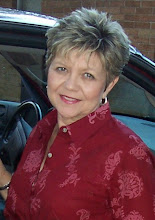www.cathymessecar.com
Earl Williams had quadruple bypass surgery and his first hospital stay. At the hospital, he assumed a different role. Instead of parking in the ministers’ reserved area and visiting the sick, he lay in an airy hospital gown receiving visitors. His sweet wife Barbara recalled the many kindnesses from staff, family and friends.
Folks rallied to “bless,” serve, Earl and Barbara. The word “bless” means to kneel or to bow the knee. In Genesis the 12th chapter, God made promises to Abram, and God used the word “bless” in at least two distinct ways.
“I will make you into a great nation and I will bless you: I will make your name great and you will be a blessing. I will bless those who bless you and whoever curses you I will curse; and all peoples on earth will be blessed through you.”
The Hebrew archives at www.studylight..org explains, “The idea of blessing may come from several factors including that of bending the knees to give or to receive.” Both elements of giving and receiving are present in Genesis 12. First, God bowed his knees and served Abram’s clan, and eventually through his lineage gifted the entire earth with the Savior. Abram believed God’s promises, appreciated his provisions, and in turn bowed his knees in service to family and foreigners.
Abram bowing his knee to serve God and contemporaries is easily imagined. However, the concept of God on his knees meeting my very real needs is more difficult to visualize. From the earliest days, God served, expressed his all-out love. The Creator seeded the earth and set up an atmosphere to support it. For thousands of years, God nurtured, but humans bit the hand that fed them. From the beginning, God planned to complete the demonstration of his love.
God’s kneeling-to-give and his extravagant measures to woe us to him, culminated in Jesus. Jesus said, “Anyone who has seen me has seen the Father” (John 14: 9). On the evening before his crucifixion, Jesus, God in the flesh, showed his disciples the “full extent of his love” (13:1).
Jesus and his disciples settled to dine, but street grime journeyed to the table on their feet. Instead of waiting for a servant, Jesus got up, took off his outer garment and wrapped a towel around his waist.
After pouring water into a basin, Jesus knelt and one at a time lifted 24 dirty feet. Wash and dry. Wash and dry. John. Andrew. James. Bartholomew. Judas. The cleansing wasn’t over in a moment. Jesus moved from man to man, foot to foot. He physically touched each disciple.
What thoughts did Jesus have as he washed each foot? Was he also saying goodbyes, for the men’s sake? Would they recall the moments when God held their feet and washed the dirt of earth away?
Would they remember him kneeling, lower than them? Would they remember looking down into his eyes? He didn’t look like a king. He didn’t look like Lord of heaven, Lord of earth. He looked like a servant.
When Jesus reached for Peter’s foot, Peter said, “You shall never wash my feet.”
Jesus said, “Unless I wash you, you have no part with me . . . later you will understand.”
God’s lavish love is not limited by protocol. God bowed his knee to Abram, so Abram could “be a blessing.” Today, God still bows his knees in service. With prolific love, he kneels and heals. He kneels to wipe sins away.
www.cathymessecar.com
Saturday, February 11, 2006
Subscribe to:
Post Comments (Atom)

No comments:
Post a Comment